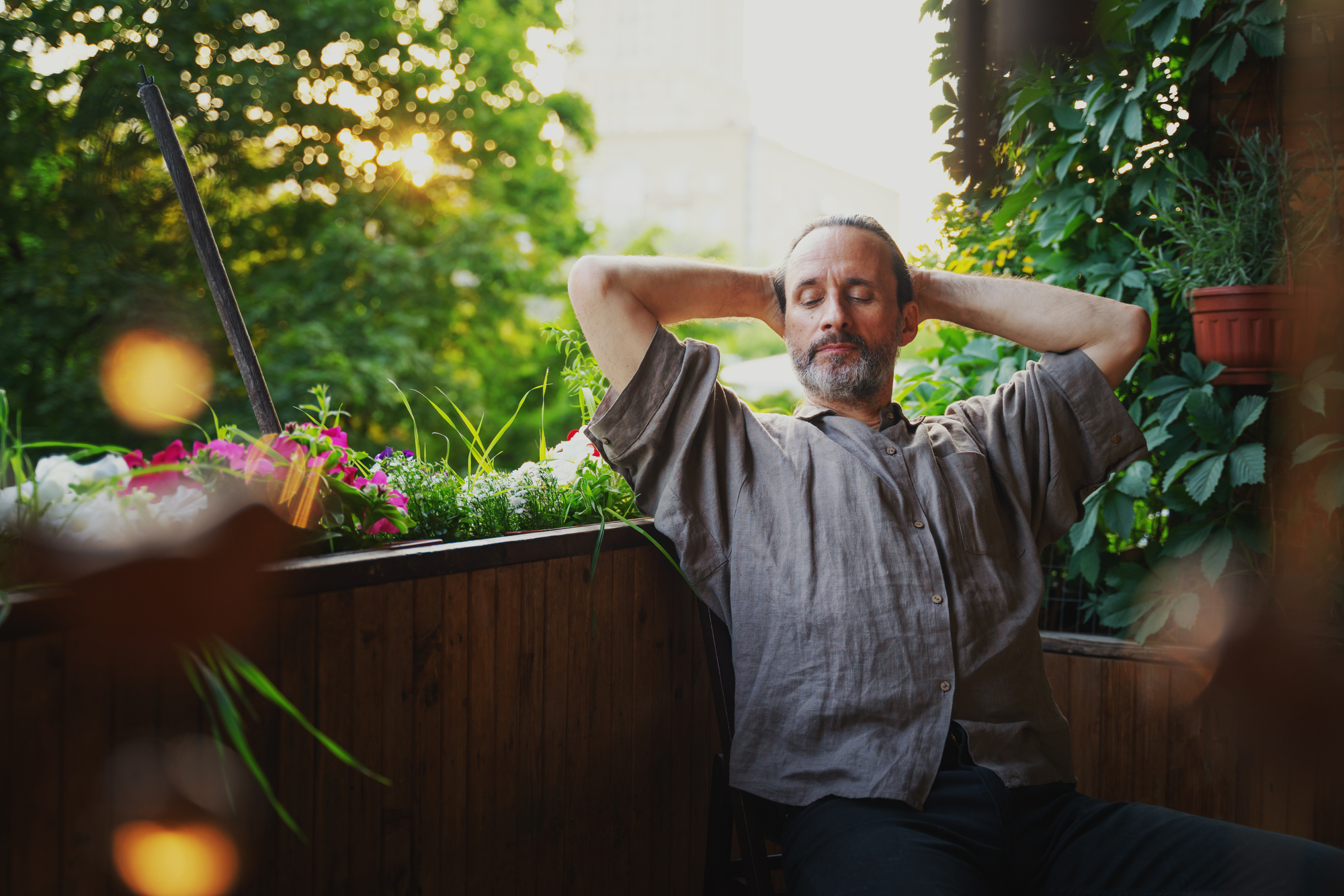You may have heard a fair bit about “grounding” lately, but might not be entirely certain what it means.
We’re going to explain how it feels when you’re not grounded, and how to reconnect yourself if and when you feel disconnected.
What Does It Mean To Be Ungrounded?
There are a few different ways to feel ungrounded, but the general definition is when you feel untethered: like you’re drifting off in all directions and don’t have a strong connection to anything.
You may have difficulty concentrating and being in the present moment, and you might not have a strong sense of self.
Little things that you’d ordinarily ignore may upset you deeply, and you might feel like you’re on an emotional rollercoaster, unable to control your thoughts and feelings.
For some people, if they’re not feeling emotionally grounded, they feel anxious. Their minds spin off into “what if?” spirals, and they have difficulty calming themselves back down.
Additionally, other people’s behaviors may be taken personally instead of viewed from a more neutral perspective.
What Causes Someone To Become Ungrounded?
One of the most common reasons why people become ungrounded is because they disassociate as a coping mechanism.
They’ve learned that if and when they feel stressed out, anxious, angry… any emotion that they associate with unpleasantness… they can just “disconnect” from what it is they’re feeling so they can get through it.
The problem here is that it’s very difficult to re-associate once a person has unlatched themselves.
Disassociation might make certain situations easier to cope with in the moment, but can have detrimental long-term effects.
Inability to process emotions and a noted lack of awareness of physical needs are just a couple of issues that can arise when one isn’t grounded in one’s body, present and mindful.
People with PTSD, or who had difficult childhoods, tend to deal with a lack of groundedness quite often.
Many retreated into their imaginations and fantasy realms in order to escape the difficulties they were forced to contend with, because being present was just too painful or traumatic.
Deep, core healing is necessary to be able to reestablish a healthy mind-body-spirit link, and grounding techniques are a vital aspect of this healing process.
Grounding Techniques
If you find that you’re spiraling and are having a really hard time being present, try a few of the following techniques.
Not all of them will work for everyone, but you should be able to find at least one that can help you re-ground yourself into a more calm and present headspace.
Five Senses Meditation
This one is great any time you need to find some calm in life’s storm, but is especially effective when you’re feeling anxious.
Since it can be difficult to just return your thoughts to the present moment, try focusing on things that are a bit more tangible: what you can see, hear, feel, taste, and smell.
Make yourself a cup of your favorite hot beverage, as its warmth and familiar flavor will soothe you.
Hold it in your hands. Focus entirely on the sensations you feel in your hands: the texture of the cup it’s in. Is it rough ceramic? Smooth porcelain?
Feel the warmth emanating from it, and picture it traveling up through your arms, into your shoulders, and through your entire body, warming you straight through to the marrow.
Next, close your eyes and inhale the scent of it. If it’s coffee or tea, try to pick out the individual notes present. Do you smell a kiss of bergamot in Earl Grey? Or nutty, chocolatey hints in a mocha coffee?
If you added flavored milk, can you smell those scents as well? Almond or vanilla? Envision the steam rising up and filling you with calm, and peace.
Now, take a sip of it. Drink slowly, mindfully, savoring the subtleties of each mouthful.
What can you taste? As with the scent observations, try to pick out the various flavors in whatever you’re drinking.
Each sip will be a little bit different… do you taste cinnamon in this sip? Does that one have a bit more sugar in it? Is it still hot, or has it cooled down a bit?
Keep your eyes closed, and as you drink, focus on what you can hear around you. Is there a fan blowing nearby, or the crackle of wood in a fireplace?
Are you playing music? Do you hear the little clicks of your pet’s toenails on the floor? Or birds singing outside?
Try to take note of three different things you can hear.
Finally, open your eyes. Look around you, and notice that you are safe where you are.
You can give yourself a task such as looking for five items of a particular color, or else really examine something nearby. Have you ever taken the time to really look at your couch? How would you describe its upholstery? Its shape? How many cushions are on it?
By focusing on tangible sensations and observations, you keep your mind from spinning off into a downward spiral. You remain utterly present – you are here, in this moment, this breath. Safe and calm.
Earthing
Have you noticed those videos going around in which people extol the benefits of walking barefoot on the earth?
Turns out that hippie dude in college who always walked around barefoot was actually doing something immensely beneficial.
The science of earthing is constantly evolving, but more and more studies (often of a double-blind design to ensure quality of results) are pointing to various health benefits.
Take off your shoes and socks, and spend some time walking barefoot on soil, sand, or grass: any natural outdoor area.
People who do this regularly report a significant increase in their wellbeing: and the growing body of evidence suggests they’re calmer, get sick less often, and even get better sleep than they used to.
(Note: further studies should and are being carried out to both expand the existing body of evidence and to replicate/confirm previous findings.)
This practice literally grounds them in the same way that a lightning rod grounds electrical energy.
We’re so used to plodding around in shoes and boots all the time that you may not even remember the last time you were barefoot on grass or soil.
If you don’t have a backyard, go to a public park and have at it.
Don’t worry about what other people may think if they see you scrunching your toes in the soil: they’re focused on their own stuff and are unlikely to pay any attention to you.
If you’re self-conscious about walking around barefoot, then just sit in the grass (or clover, or moss) instead. Bring a blanket and a book, and rest your feet just off the edge of it so they make contact with the earth.
Then take note of how awesome you feel later.
You may also like (article continues below):
- How To Get Your Life Back On Track When The Wheels Have Come Off
- How To Be Happy And Content With What You Have In Life
- 8 Reasons You Feel Like You Don’t Belong Anywhere
- 8 Methods To Reconnect With Your Inner Child (And Why You’d Want To)
- 20 Thought-Provoking Questions You’ll Be Thinking About For Days
Walking Meditation
This also has to do with having your feet firmly planted on the ground, but instead of being barefoot, you walk at a regular, comfortable pace.
Like a metronome used in hypnosis, the metered sensations (and sounds) of your feet hitting the pavement are immensely calming, and can bring scattered thoughts and emotions back to center.
Aim for a pace that you fall into when you’re not in a hurry to get anywhere, and focus all of your attention on body awareness.
Be aware of the rolling sensation under your feet as they move over the pavement. Take note of whether it’s a smooth sensation that your entire sole can feel? Or do you mostly feel this in your heel, the outside edge of your foot, and your toes?
Focus on your ankles. Do they feel tight? Or are they loose and relaxed?
What about your calves and shins? Really focus on how it feels as your calf muscles alternate between tightening and relaxing.
And now your knees and thighs. How does your clothing fabric feel against your skin as you walk? Does it brush lightly, or cling? Are you even aware of it? Which of your thigh muscles do you use most as you walk?
Keep this awareness going as far up your body as you like. You can stop at your abdomen, keep going through to your arms and back, or even all the way up to the sensation of sun or wind on your head. It’s entirely up to you.
After you’ve done this kind of active mindfulness meditation, stop for a few minutes and just breathe deeply.
On your way home, think about one single issue that has been weighing on you, and try to approach it from a place of neutrality – as though you’re an outside observer watching from a distance.
You’ll likely find that you now have a different perspective on it, and can work through it calmly instead of being overwhelmed by emotion.
Chakra Rooting
This one is particularly important if you feel as though you’re spiritually ungrounded.
Signs and symptoms that tell you that you’re in need of spiritual grounding include dizziness, being lightheaded or spaced-out, feeling emotionally and/or physically drained, being unable to concentrate, and losing track of time.
A lot of spiritual (also hippie) folk are often accused of being “flaky” or “spacy” because they’re really focused on opening their higher chakras, and don’t spend enough time grounding their lower ones.
The crown and third eye chakras are very important for spiritual growth, but unless your root chakra is firmly grounded into the earth, you end up being unbalanced and out of sorts.
Fortunately, this is easily remedied.
Sit down, either right on the ground or in a comfy chair with your feet flat on the floor in front of you. Take a few deep belly breaths: in to the count of four, hold your breath to the count of four, and exhale to the count of eight. Do this a few times.
Now, focus on your root chakra. Envision it as a ruby red ball of light around your tailbone or perineum.
See that glowing ball as clearly as you can in your mind’s eye, and then envision a cord, or something like a tree root, moving down from your body into the earth.
See it moving through the Earth’s crust, down through layers of soil and humus… down, down through layers of rock, right into the earth’s molten core.
Picture another, large ruby – the twin of the one inside you – right in the middle of that molten core.
Now envision the cord you sent down, and see it extending and wrapping itself around that ruby, securing you to the very center of the Earth.
Now, see a golden light (like twining gold filigree) coiling from the middle of that ruby, up and around your grounding cord.
See it wind itself up, up, up, creating a glowing umbilicus that draws energy up from the Earth’s heart, up into your body, and locking around the ruby within you.
Do this meditation daily for a week or so, and see whether it helps you feel more grounded and able to focus on day-to-day tasks.
How Can I Remain Grounded Now?
If you find that one of these grounding techniques works well for you, make a point of repeating it regularly.
For example, if you live in a warmer climate where you can walk barefoot outside almost daily, then do so.
If the chakra rooting technique is the one that resonates best with you, dedicate a block of time once or twice a week to repeat it.
Some people choose to carry or wear an item that reminds them to ground themselves.
Semi-precious stone mala bracelets or amulets are ideal for this, as you can literally hold onto the stone (which comes from the Earth, so it’s already grounded), and take note of its physical attributes.
This can help to bring you back down to Earth when you’re feeling flighty.
Shungite, hematite, jasper, smoky quartz, turquoise, moss agate, and obsidian are some of the best stones to aid in grounding.
Obsidian and jasper are also ideal for strengthening your root chakra – along with red carnelian, bloodstone, and black tourmaline.
Make sure you’re getting enough iron and other minerals in your diet, and try to ensure that you get proper rest. Foods such as root vegetables, nuts, and seeds are helpful for this, and dandelion root tea can be beneficial as well.
When you eat, eat. Don’t eat in front of the TV or computer, but instead focus on every bite you take, savoring textures and flavors. Be as mindful and present as possible.
Over time, this mindfulness will become more like second nature, and between eating healthy and practicing proper self-care, you’ll undoubtedly discover that you’re feeling a lot calmer, more secure within yourself, and more grounded than ever.










